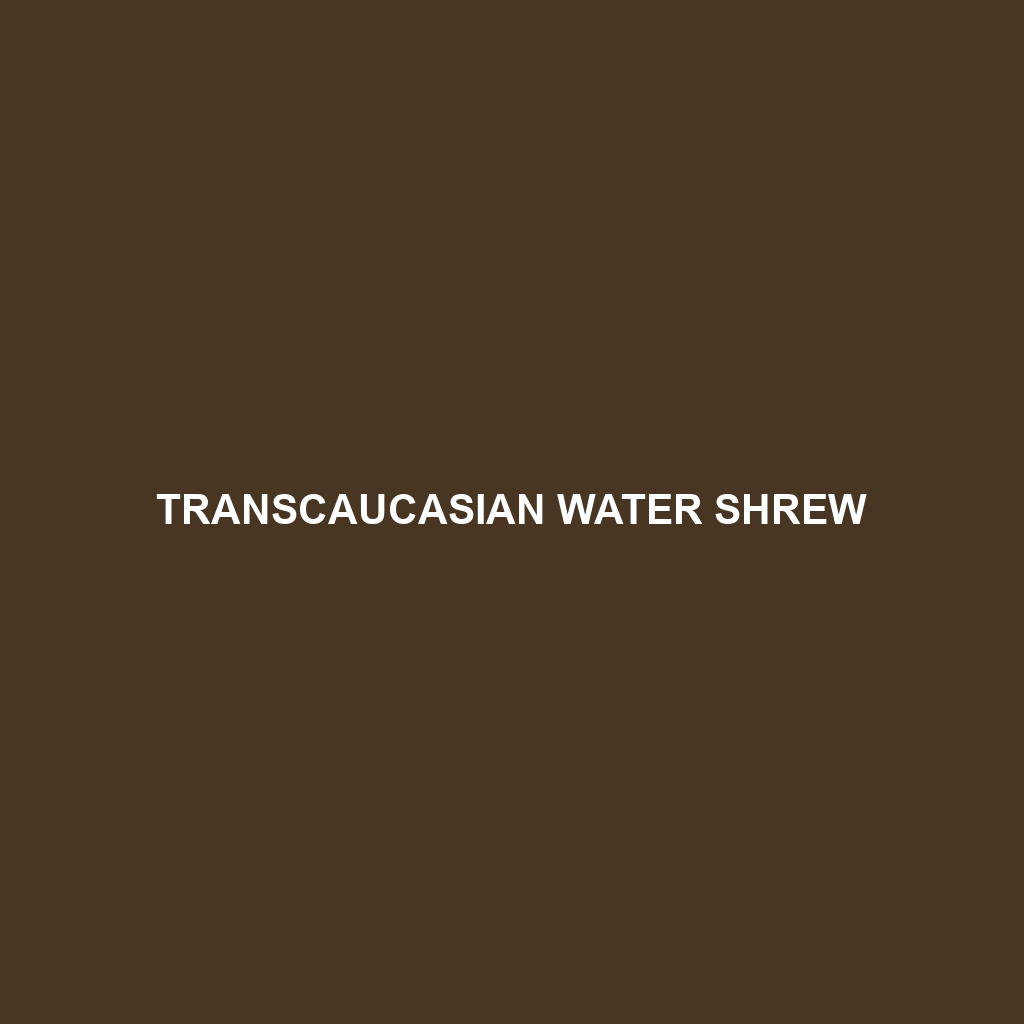Transcaucasian Water Shrew Species Description
Common Name: Transcaucasian Water Shrew
Scientific Name: Neomys teres
Habitat
Transcaucasian Water Shrew is primarily found in the Transcaucasian region, encompassing countries such as Georgia, Armenia, and Azerbaijan. This species thrives in habitats that include riparian zones, marshes, and areas adjacent to flowing streams and rivers. They prefer dense vegetation that offers cover and access to water, making wetland ecosystems their ideal home.
Physical Characteristics
The Transcaucasian Water Shrew averages about 10-12 cm in length, not including a similarly sized tail. Its fur is typically dark brown or greyish on the back, while the underbelly is lighter in color. Notable features include webbed feet that enhance swimming capabilities and a pointed snout that aids in hunting aquatic prey. Their long, muscular body and waterproof fur make them adept at moving through water, highlighting their adaptation to a semi-aquatic lifestyle.
Behavior
Transcaucasian Water Shrews are primarily nocturnal, showcasing a variety of fascinating behaviors. They are excellent swimmers and can remain submerged for extended periods while hunting. These shrews are known for their agility and speed, both in water and on land. They communicate through a series of vocalizations and scent markings, which play a crucial role in territory establishment and mating rituals.
Diet
The diet of the Transcaucasian Water Shrew consists mainly of aquatic invertebrates, such as insects and crustaceans. They are also known to consume small fish and amphibians, utilizing their sharp teeth and agile hunting techniques. Their feeding habits highlight their role as predators in wetland ecosystems, helping to manage populations of their prey.
Reproduction
Breeding typically occurs in the spring months, with females giving birth to a litter of 3-7 young after a gestation period of about 30 days. The offspring are born blind and helpless but develop quickly, becoming independent within weeks. Notably, parental care includes nursing and teaching the young to hunt, which is critical for their survival.
Conservation Status
The Transcaucasian Water Shrew is currently classified as vulnerable due to habitat loss and degradation. Wetland destruction from development and pollution poses significant threats to their populations. Conservation efforts are essential to protect their habitats and ensure the survival of this unique species.
Interesting Facts
– The Transcaucasian Water Shrew is one of the few shrew species adapted to a semi-aquatic lifestyle.
– They can swim underwater with remarkable agility and have been observed diving to depths of up to 1 meter in search of food.
– This species is known for its high metabolic rate, requiring it to eat nearly its body weight in food each day to sustain energy levels.
Role in Ecosystem
As a predator of various aquatic organisms, the Transcaucasian Water Shrew plays a vital role in maintaining the ecological balance of its habitat. By controlling populations of insects and small fish, it contributes to the overall health of wetland ecosystems. Additionally, as prey for larger predators, it forms an important part of the food web, supporting biodiversity within its region.
